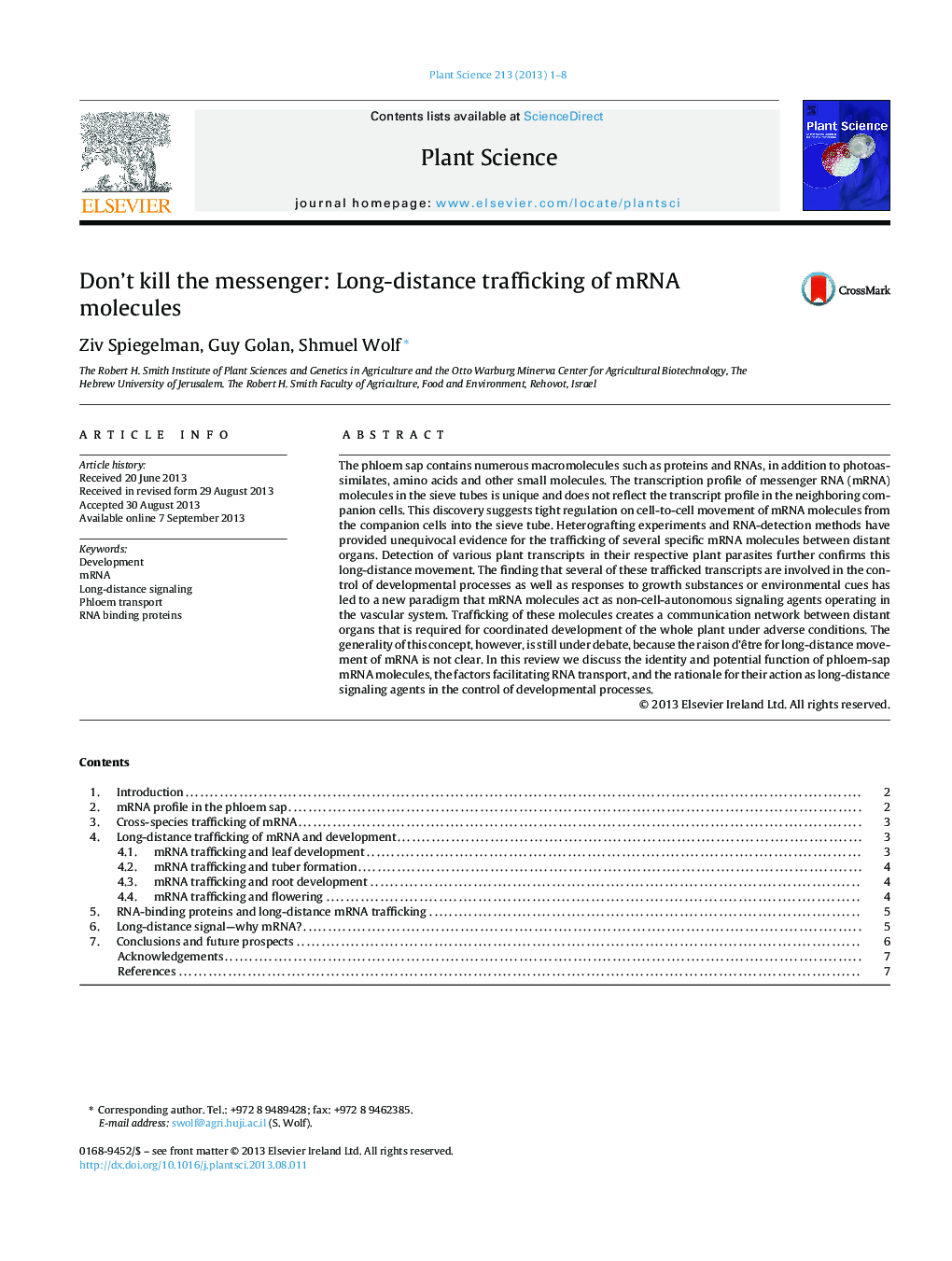| Article ID | Journal | Published Year | Pages | File Type |
|---|---|---|---|---|
| 2017095 | Plant Science | 2013 | 8 Pages |
Abstract
The phloem sap contains numerous macromolecules such as proteins and RNAs, in addition to photoassimilates, amino acids and other small molecules. The transcription profile of messenger RNA (mRNA) molecules in the sieve tubes is unique and does not reflect the transcript profile in the neighboring companion cells. This discovery suggests tight regulation on cell-to-cell movement of mRNA molecules from the companion cells into the sieve tube. Heterografting experiments and RNA-detection methods have provided unequivocal evidence for the trafficking of several specific mRNA molecules between distant organs. Detection of various plant transcripts in their respective plant parasites further confirms this long-distance movement. The finding that several of these trafficked transcripts are involved in the control of developmental processes as well as responses to growth substances or environmental cues has led to a new paradigm that mRNA molecules act as non-cell-autonomous signaling agents operating in the vascular system. Trafficking of these molecules creates a communication network between distant organs that is required for coordinated development of the whole plant under adverse conditions. The generality of this concept, however, is still under debate, because the raison d'être for long-distance movement of mRNA is not clear. In this review we discuss the identity and potential function of phloem-sap mRNA molecules, the factors facilitating RNA transport, and the rationale for their action as long-distance signaling agents in the control of developmental processes.
Related Topics
Life Sciences
Agricultural and Biological Sciences
Plant Science
Authors
Ziv Spiegelman, Guy Golan, Shmuel Wolf,
